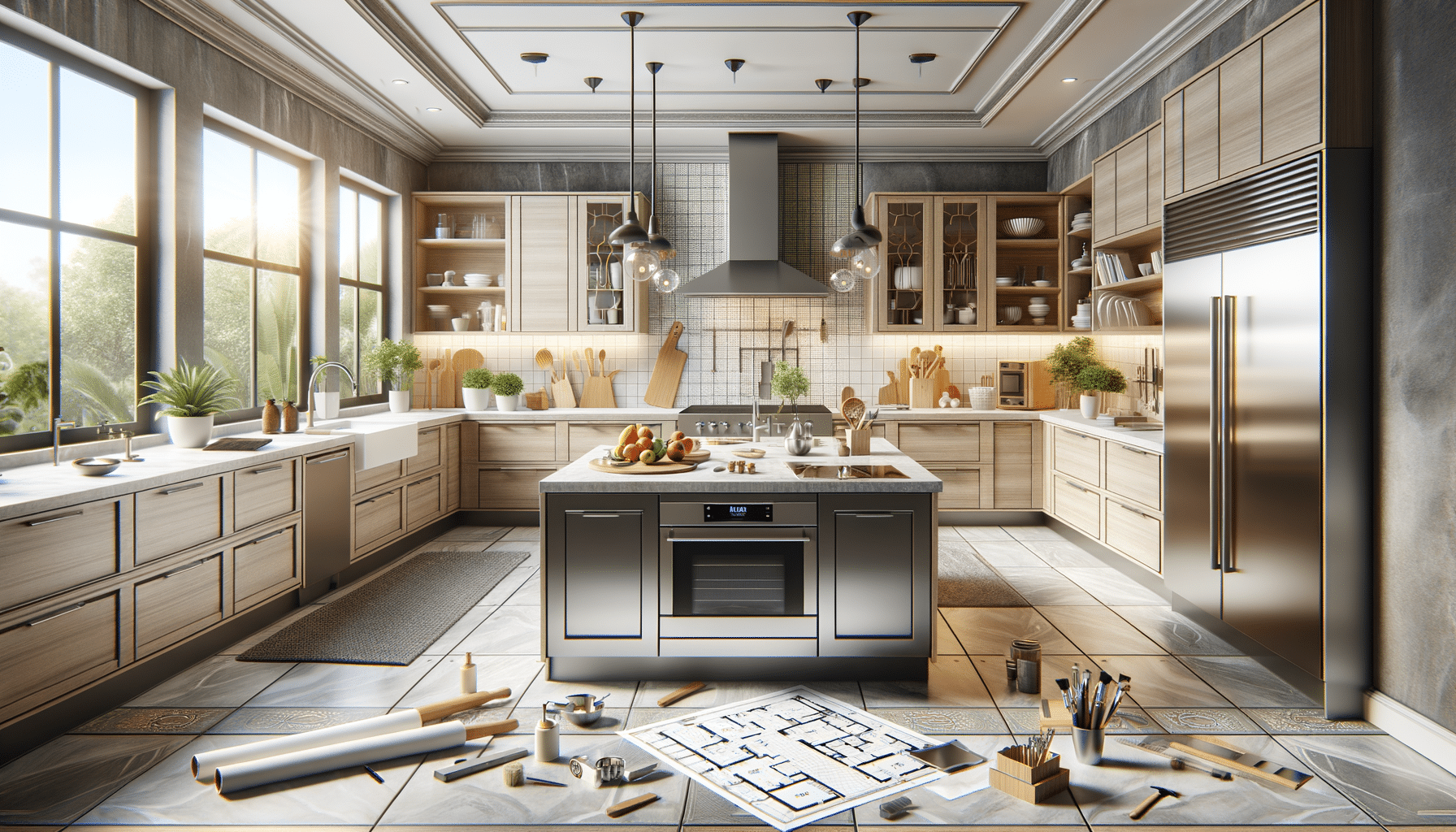
Everything You Need to Know About Kitchen Remodeling
Why Remodel Your Kitchen?
The kitchen is more than just a functional space for preparing meals; it’s a central hub where families gather, share stories, and create memories. This multifaceted role makes it essential for the kitchen to be both practical and inviting. Remodeling can transform this vital area into a space that better suits your lifestyle and aesthetic preferences.
One primary reason to consider a kitchen remodel is to enhance functionality. As your family grows or your cooking habits change, you may find that your kitchen no longer meets your needs. Whether it’s adding more storage, creating a more efficient layout, or installing modern appliances, remodeling can address these issues.
Another compelling reason is to increase the value of your home. A well-designed kitchen remodel can significantly boost your property’s market value, making it a wise investment. According to real estate experts, kitchen upgrades often provide a strong return on investment, which can be a crucial consideration if you’re planning to sell your home in the future.
Lastly, a kitchen remodel offers the opportunity to personalize your space. From choosing the color scheme to selecting materials and finishes, you can create a kitchen that truly reflects your personality and taste. This personalization can make your kitchen a more enjoyable space to spend time in, whether you’re cooking a meal, entertaining guests, or simply enjoying a quiet cup of coffee.
Planning Your Kitchen Remodel
Effective planning is the cornerstone of a successful kitchen remodel. Before diving into design choices and material selections, it’s important to establish a clear vision of what you want to achieve. Start by assessing your current kitchen and identifying the aspects that work well and those that need improvement.
Budgeting is a critical part of the planning process. Determine how much you’re willing to spend and allocate funds to different aspects of the remodel, such as cabinetry, appliances, and labor. It’s wise to set aside a contingency fund for unexpected expenses that may arise during the project.
Another key consideration is the layout of your kitchen. The layout should facilitate easy movement and workflow, especially if you spend a lot of time cooking. Common kitchen layouts include the L-shape, U-shape, and galley, each offering different advantages depending on the size and shape of your space.
Once you’ve outlined your goals and budget, it’s time to consult with professionals. Hiring a reputable contractor or designer can provide valuable insights and help you avoid common pitfalls. They can assist with everything from selecting materials to obtaining necessary permits, ensuring your remodel progresses smoothly and efficiently.
Choosing Materials and Appliances
When it comes to kitchen remodeling, the choice of materials and appliances plays a crucial role in the overall outcome. The materials you select for countertops, cabinetry, and flooring should align with your aesthetic preferences while offering durability and ease of maintenance.
Countertops are a focal point in any kitchen, and there are numerous materials to choose from, including granite, quartz, and laminate. Granite is renowned for its natural beauty and durability, while quartz offers a non-porous surface that’s resistant to stains. Laminate is a budget-friendly option that provides a wide range of colors and patterns.
Cabinetry is another important consideration. Solid wood cabinets offer a classic look and long-lasting quality, but they can be expensive. Alternatively, engineered wood and laminate cabinets provide a cost-effective solution with a variety of finishes to choose from.
Appliances are integral to the functionality of your kitchen. When selecting appliances, consider energy efficiency and features that cater to your cooking habits. Stainless steel appliances are popular for their sleek appearance and durability, while smart appliances offer advanced technology to enhance convenience.
Maximizing Space and Storage
In any kitchen remodel, maximizing space and storage is essential to create a functional and organized environment. Even in smaller kitchens, clever design solutions can make a significant difference in how the space is utilized.
One effective strategy is to incorporate vertical storage. Tall cabinets that extend to the ceiling can provide additional storage space without taking up valuable floor area. Open shelving is another option that adds both storage and display opportunities, allowing you to showcase attractive dishware or decorative items.
Utilizing corner spaces is often overlooked, but it can greatly enhance storage capacity. Lazy Susans, pull-out shelves, and corner drawers are innovative solutions that make the most of these awkward areas, ensuring no space goes to waste.
In addition to cabinetry, consider incorporating multifunctional furniture. An island with built-in storage or a dining table with drawers can serve multiple purposes, providing extra storage while enhancing the kitchen’s functionality.
Lighting and Finishing Touches
The right lighting can transform the ambiance of your kitchen, making it more inviting and functional. Layered lighting, which combines ambient, task, and accent lighting, is an effective approach to achieve a well-lit space.
Ambient lighting provides overall illumination, typically achieved through ceiling fixtures or recessed lights. Task lighting focuses on specific areas where activities like cooking or reading recipes take place. Under-cabinet lights and pendant lights over the island are popular choices for task lighting.
Accent lighting adds a decorative touch, highlighting architectural features or artwork. LED strips or spotlights can be used to draw attention to open shelving or a backsplash, adding depth and interest to the design.
Finishing touches, such as hardware, paint colors, and backsplashes, contribute to the kitchen’s overall aesthetic. Choose hardware that complements the style of your cabinetry, whether it’s sleek and modern or classic and ornate. The backsplash offers an opportunity to introduce color and texture, serving as a backdrop that ties the design elements together.


